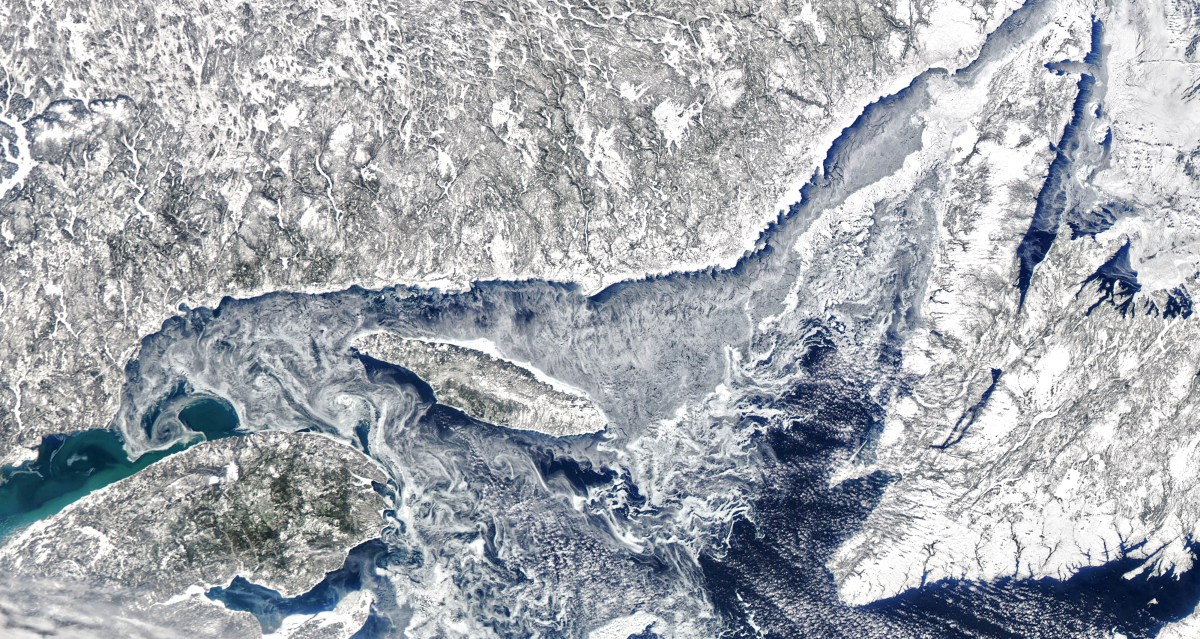Environmental flows in California: “The California Environmental Flow Framework was recently highlighted in the 2020 Water Resilience Portfolio to address the seemingly impossible task of establishing of how much water our rivers and streams need to support healthy ecosystems. While many methods for setting environmental water needs exist, the Framework provides a unique and flexible approach that is applicable statewide. What is the California Environmental Flows Framework? Developed by a workgroup of researchers and agency staff from across the state, the Framework is a guidance document for developing ecological flow criteria, which describe the timing and magnitude of streamflow required throughout the year to support native species and their habitat. … ” Read more from the California Water Blog here: Environmental flows in California
Study draws Southern California coastal light pollution into focus: “Artificial light is known to disrupt mating cycles in species like the grunion—as well as disorient insects and upset predator-prey relationships—along the Southern California coast. With those harmful effects of artificial light in mind, a team of UCLA and University of Southern California researchers led by Travis Longcore, UCLA adjunct professor of urban conservation biology, have mapped light pollution conditions at hundreds of locations along the coast that they will use to inform decision-making for future infrastructure and construction plans. … ” Read more from PhysOrg here: Study draws Southern California coastal light pollution into focus
Microplastics found in a quarter of San Diego estuary fish: “In a sampling of fish from a creek that flows into San Diego Bay, nearly a quarter contain microplastics, according to a new study published in the journal PLOS ONE. The study, which examined plastics in coastal sediments and three species of fish, showed that the frequency and types of plastic ingested varied with fish species and, in some cases, size or age of fish. The study reveals that species’ natural history, in particular what they eat, how they feed, and how those change over their lifetimes, may influence their contamination levels. This new information on how plastics travel through the environment and into fish could help add a key piece to the emerging picture of the dynamics and impacts of plastics in California’s coastal environment. ... ” Read more from PhysOrg here: Microplastics found in a quarter of San Diego estuary fish
Microplastic fibers linked to respiratory, reproductive changes in fish: “Chronic exposure to microplastic fibers causes aneurysms, erosion of surface layers and other serious damage to fish gills, and increases egg production in female fish, a sign that chemicals in the fibers may be acting as endocrine disruptors, a new study by U.S. and Chinese scientists finds. The minuscule fibers, which are made of polyester, polypropylene and other types of plastics, are shed or washed off of synthetic textiles used in clothing and other consumer and industrial products. Once shed, they enter wastewater and accumulate in oceans, rivers and lakes worldwide, accounting for more than 90% of microplastic pollution in some areas. … ” Read more from Science Daily here: Microplastic fibers linked to respiratory, reproductive changes in fish
Environmental DNA in rivers offers new tool for detecting wildlife communities: “Ecologists in England and Scotland, collaborating with ecologists Christopher Sutherland and Joseph Drake at the University of Massachusetts Amherst, report this week on a new method of identifying an “entire community of mammals”—including elusive and endangered species that are otherwise difficult to monitor—by collecting DNA from river water. “Some mammal species are notoriously difficult to monitor,” says environmental conservation Ph.D. student Drake. He adds that traditional survey methods are often tailored to a specific species, and therefore don’t guarantee the detection of many other important species that are also present. Camera traps have improved the way conservation scientists study wildlife, but environmental DNA (eDNA) methods may offer a monitoring tool that could revolutionize conservation and ecology research, Sutherland adds, but the method required testing. … ” Read more from PhysOrg here: Environmental DNA in rivers offers new tool for detecting wildlife communities
New app streamlines wetland data: “Ecobot, founded by Jeremy Schewe and Lee Lance, is a wetland delineation app that streamlines data input, provides data lookups and generates U.S. Army Corps of Engineers (USACE) wetland delineation reports. The idea for Ecobot came to Schewe about eight years ago. He was doing delineation work for the U.S. Forest Service and was stuck in a national forest due to heavy rain. As he was walking, he slipped and fell, and the machete in his hand flew in the air and cut him across the forehead. Frustrated, he thought there had to be a simpler way to collect data than carrying tools and paperwork around. The app is available for download from the Apple Store, and SWS Managing Editor Katie Johns asked Schewe to share details about how it works. ... ” Read more from Storm Water Solutions here: New app streamlines wetland data
Natural organic matter influences arsenic release into groundwater: “Millions of people worldwide consume water contaminated with levels of arsenic that exceed those recommended by the World Health Organization. This could cause health problems, such as arsenic poisoning, cardiovascular disease and cancer. Microbes in groundwater release arsenic from sediments, and organic matter helps fuel this reaction. Now, researchers reporting in ACS’ Environmental Science & Technology have discovered that the type of natural organic matter (NOM) influences the rate and level of arsenic release. … ” Read more from Science Daily here: Natural organic matter influences arsenic release into groundwater
Fresh groundwater flow important for coastal ecosystems: “Groundwater is the largest source of freshwater, one of the world’s most precious natural resources and vital for crops and drinking water. It is found under our very feet in the cracks and pores in soil, sediments and rocks. Now an international research team led by the University of Göttingen has developed the first global computer model of groundwater flow into the world’s oceans. Their analysis shows that 20% of the world’s sensitive coastal ecosystems — such as estuaries, salt marshes and coral reefs — are at risk of pollutants transported by groundwater flow from the land to the sea. The research was published in Nature Communications. … ” Read more from Science Daily here: Fresh groundwater flow important for coastal ecosystems
When litter becomes habitat: “A team of zoologists surveying a section of the Gulf of Pozzuoli off the coast of Naples, Italy, expected to find little life and biodiversity after years of industrial activity. Instead, they were amazed by the amount of life they witnessed among the litter. The Gulf of Pozzuoli is a small bay in the northern part of the Gulf of Naples. The area has been home to industrial activity and high naval traffic since the 20th century, leading to pollution. As a result, the area was given priority status for remediation by the government. Since 2016, a consortium of researchers has been working on a project to ameliorate the marine habitat. As part of the project, Fabio Crocetta, a zoologist with the Anton Dohrn Zoological Station in Naples, assessed the amount of litter and the bay’s biodiversity in 2019. “What we found was totally unexpected,” says Crocetta. ... ” Read more from Hakai Magazine here: When litter becomes habitat
Invisible plastics in water: “A Washington State University research team has found that nanoscale particles of the most commonly used plastics tend to move through the water supply, especially in fresh water, or settle out in wastewater treatment plants, where they end up as sludge, in landfills, and often as fertilizer. Neither scenario is good. “We are drinking lots of plastics,” said Indranil Chowdhury, an assistant professor in WSU’s Department of Civil and Environmental Engineering, who led the research. “We are drinking almost a few grams of plastics every month or so. That is concerning because you don’t know what will happen after 20 years.” … ” Read more from PhysOrg here: Invisible plastics in water
Study suggests LEGO bricks could survive in ocean for up to 1,300 years: “A LEGO brick could survive in the ocean for as many as 1,300 years, according to new research. A study led by the University of Plymouth examined the extent to which items of the ever-popular children’s toy were worn down in the marine environment. By measuring the mass of individual bricks found on beaches against equivalent unused pieces and the age of blocks obtained from storage, researchers estimated that the items could endure for anywhere between 100 and 1,300 years. ... ” Read more from PhysOrg here: Study suggests LEGO bricks could survive in ocean for up to 1,300 years
Scientists must learn how to interact with Indigenous people, says Daniel Henryk Rasolt: “Last February, Jesus Rotieroke and I sat together chewing on our thoughts (in the form of coca-based mambe) after spending a sweltering day in the family chagra harvesting cassava and plantains. A leader of the Muina Murui of the Colombian Amazon, Rotieroke had a thing or two to say to me, a U.S.-trained physicist looking to learn from and support his traditional community, about the role science plays in his world. “We welcome anyone with occidental training who respects our rights, listens to our needs, and helps us adapt to threats happening in and around our territory,” he told me. The take-home message was clear: An alliance between integrated science and traditional knowledge can help reshape our understanding and treatment of the natural world. But to make the most of the powerful potential of such interdisciplinary and intercultural collaboration, the “Western World” must learn how to more effectively and respectfully interact with traditional Indigenous people and value their complex knowledge and understanding. … ” Read more from Ensia here: Scientists must learn how to interact with Indigenous people
Featured image credit: Ice Eddies in the Gulf of St. Lawrence, by NASA’s Earth Observatory
About Science News and Reports: This weekly feature, posted every Thursday, is a collection of the latest scientific research and reports with a focus on relevant issues to the Delta and to California water, although other issues such as climate change are sometimes included. Do you have an item to be included here? Submissions of relevant research and other materials is welcome. Email Maven




